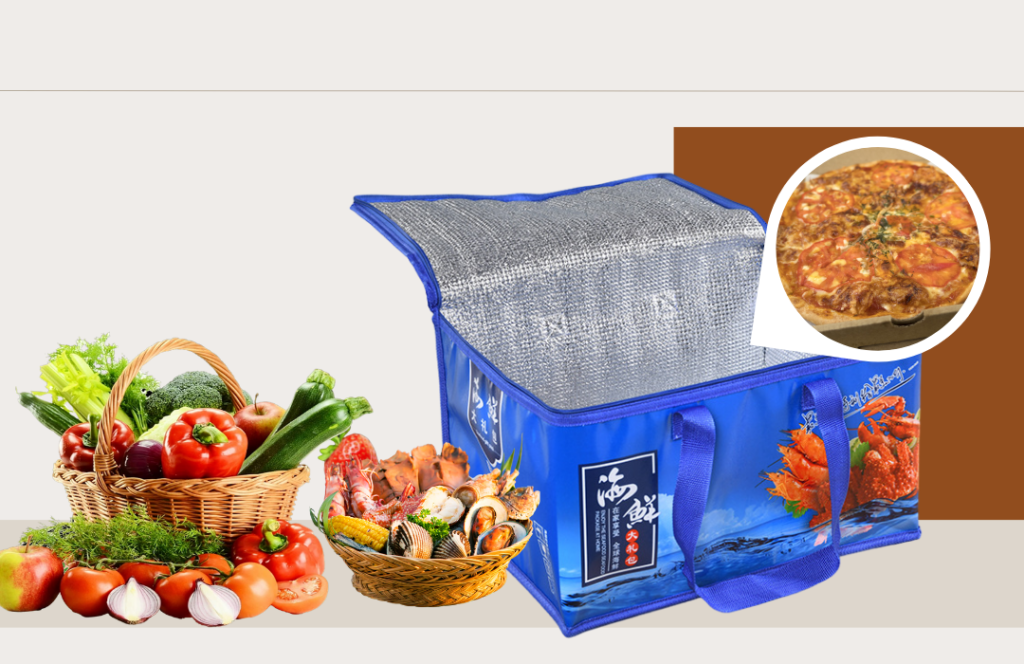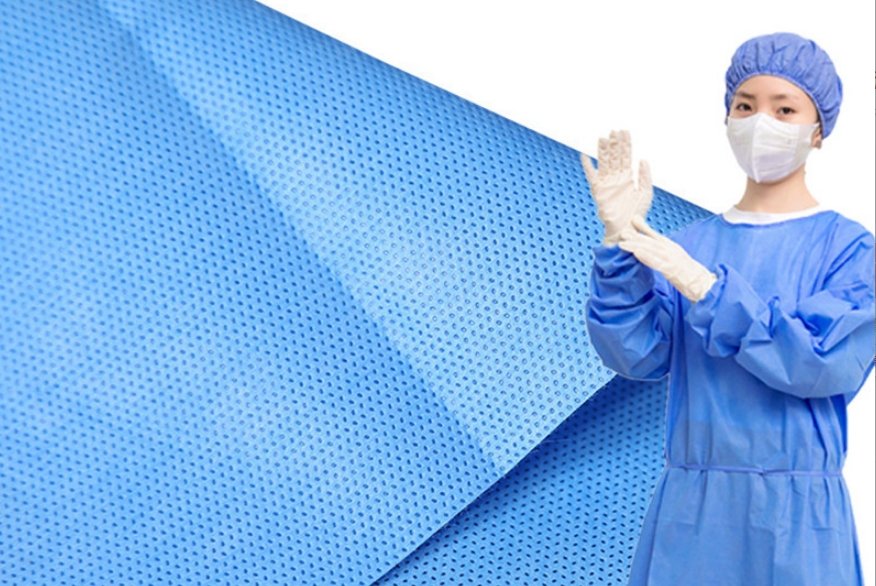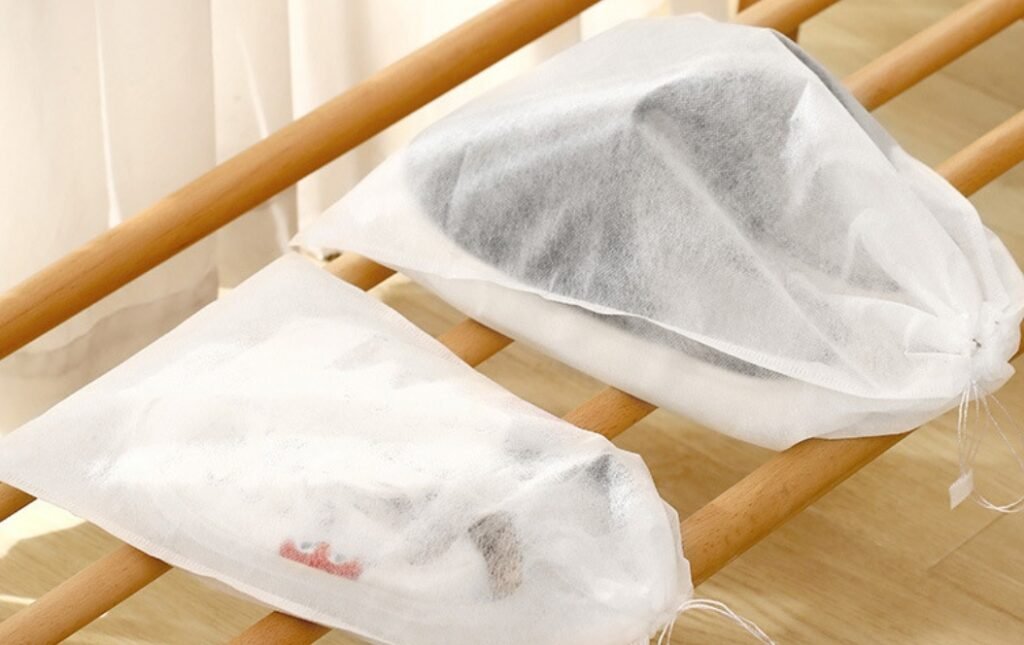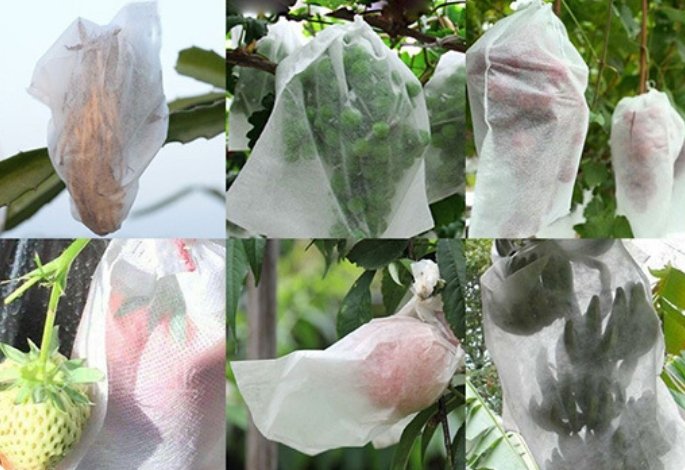Top 10 Applications of Non woven Fabric
- Fullpacking
- November
Have you noticed that we commonly use various packaging materials, with only a few well-known types such as paper, plastic, glass, wood, rubber, fabric, foam, and so on? In fact, there is another material that is present in our lives, but we rarely recognize its name—non woven fabric. Non woven fabric, an eco-friendly material made from synthetic fibers, has become an indispensable part of our daily lives due to its unique advantages. Although the name “non woven fabric” doesn’t often reach our ears, it is everywhere around us. Let’s explore the top 10 applications of non woven fabric and see how this material appears in our everyday life.
1.Eco Bag: A Green Choice for Daily Use
Non woven bags, due to their eco-friendly properties, have become the ideal choice to replace traditional plastic bags. Plastic bags, which are difficult to degrade, cause serious environmental pollution known as “white pollution.” In contrast, non woven eco bag are recyclable and reusable, reducing reliance on petroleum resources and the pressure on landfills. The durability and reusability of non woven eco bag mean they can serve consumers for a long time, reducing environmental burdens. Furthermore, non woven eco bag can be customized according to different uses and designs, making them both practical and aesthetically pleasing. Choosingnon woven eco bag is not only an eco-friendly lifestyle choice but also a practice of sustainable development.

2.Insulation bags Field: Keeping Temperature Consistent, Keeping Freshness
Non woven fabric, due to its durability, recyclability, and resistance to water and oil, has become the ideal material for making insulation bags. This material not only resists external environmental influences to maintain the temperature and freshness of items inside but also aligns with the sustainable development trend. Non woven fabric is often combined with materials such as aluminum foil or EPE foam to enhance the insulation effect, stabilizing the internal temperature. This combination makes nonwoven fabric insulation bags highly favored in the food delivery and transportation industries, ensuring the quality and safety of food during transport.

3.Medical Field: Protecting Health with Nonwoven Fabric
Non woven fabric has extensive applications in the medical industry, especially in crucial protective equipment such as surgical gowns, medical masks, and isolation gowns. As a material with strong breathability, softness, and certain waterproof properties, non woven fabric is widely used in medical protective gear to protect healthcare workers and patients from external contamination. These disposable medical products made from non woven fabric play a vital role in maintaining public health and responding to global health crises.

4.Home Textile Products: Comfort and Eco-Friendliness in One
In the home textile industry, non woven fabric serves as a practical and aesthetically pleasing material for products like sofa mattresses, bedding, pillowcases, and aprons due to its durability, comfort, and eco-friendliness. These non woven fabric home goods not only enhance comfort but also make daily maintenance simple, as they are easy to clean and quick-drying. Moreover, the recyclability and biodegradability of nonwoven fabric reduce environmental impact, providing an ideal solution for modern homes that pursue a green lifestyle.

5.Footwear Industry: Perfect Combination of Comfort and Durability
In the footwear industry, non woven fabric’s softness and breathability make it an indispensable material for shoe components such as linings, shoe bags, and shoe covers. It enhances the comfort and aesthetics of shoes while ensuring durability and resistance to wear.

6.Industrial Field: Enhancing Production Efficiency and Quality
Non woven fabric’s durability, wear resistance, and versatility have led to its widespread use in various industrial applications, such as erosion control fabric, waterproof membranes, automotive interiors, and various filtration materials. These non woven fabric products not only protect against environmental damage but also improve production efficiency. For example, waterproof membrane fabrics effectively prevent soil erosion, and automotive interior fabrics provide comfortable and durable materials for vehicles. With technological advancements and increasing demand for sustainable materials, the use of non woven fabric in the industrial sector will continue to expand, offering solutions for more industries.

7.Packaging and Storage: The Best Assistant for Home Organization Non woven fabric
has significant applications in the packaging and storage field due to its light weight, durability, and ease of cleaning. Products such as storage boxes, garment bags, appliance covers, and car covers are often made from non woven fabric. These non woven fabric items effectively protect goods from dust and moisture while keeping home spaces tidy and organized. Additionally, the breathability of non woven fabric enhances its advantage in storage applications, allowing for air circulation and preventing mold or odor buildup. The flexibility of non woven fabric allows products to be designed in various sizes and shapes to meet different storage needs, from small accessories to large furniture.

8.Craft Gifts: Adding Unique Charm
Non woven fabric also plays an important role in the craft and gift industry. Its softness and the wide range of colors and customization options make it the preferred material for holiday flower wrapping, gift bags, car interiors, and home decor items. Non woven fabric’s customizability allows it to be designed in various shapes and patterns, adding a unique artistic and personalized charm to gifts. Furthermore, its eco-friendly features align with modern consumers’ preference for sustainability.

9.Agricultural Field: An Eco-Friendly Partner Promoting Plant Growth
The application of non woven fabric in agriculture is increasingly showing its unique value, not only helping to improve plant survival rates and longevity but also providing an environmentally friendly and efficient solution for agricultural production. Non woven fabric’s breathability and moisture retention properties ensure better growing conditions for crops and plants during transportation, seedling development, and soil protection. It is widely used for breathable packaging around plant roots, ensuring airflow and moisture retention, which prevents root suffocation and improves plant survival. As a soil cover material, non woven fabric reduces moisture evaporation and inhibits weed growth, thus reducing the use of fertilizers and herbicides, lowering environmental impact, and promoting more sustainable agricultural management.

10.Furniture Industry: Enhancing Comfort and Durability
Non woven fabric, due to its lightness, durability, and resistance to wear, is an indispensable material in the furniture industry, particularly in the manufacture of mattresses and sofas. It is commonly used in mattress inner spring packaging, sofa linings, and bottom fabrics, helping to improve the structural stability of furniture and enhance comfort. Non woven fabric materials not only improve the overall quality of furniture but also provide a more comfortable user experience for consumers.

Conclusion
Non woven fabric is often unnoticed in our daily lives, but it is an indispensable material with wide applications across various industries. From eco bag to medical protective gear, and from agricultural to industrial uses, the unique characteristics of non woven fabric—such as its durability, breathability, and recyclability—make it the ideal choice in many fields. As sustainability becomes an increasingly important global trend, the use of nonwoven fabric is expected to grow, offering more environmentally friendly solutions for the future.


